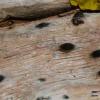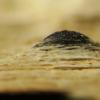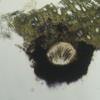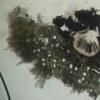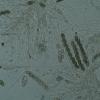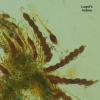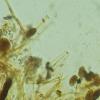
01-01-2026 18:35
Original loamy soil aside a artificial lake.The co

31-12-2025 19:27
Collected from loamy soil, at waterside (completel

30-12-2025 16:44
Pascal DucosBonjour,Une anamorphe rose stipitée, très nombre

30-12-2025 17:14
 Bernard CLESSE
Bernard CLESSE
Bonjour à toutes et tous,Pourriez-vous aider Albe

29-12-2025 10:15
Hulda Caroline HolteHello, I found and collected this propoloid ascom

30-12-2025 09:04
Hello.A Pyrenomycete sprouting sparsely but very d

29-12-2025 17:44
Isabelle CharissouBonjour,J'aimerais savoir si d'autres personnes au
Possibly Mycothyridium lividum (to confirm)
Stephen Martin Mifsud,
13-11-2024 08:01
 I am revising some old material again and I have these black semiglobular perithecia on bark of Thymus capitatus, about 0.5 mm in across mostly immersed in the woody bark. The ascospores are 5-7 septate (or having 6-8 compartmnts if that is easier), brownish-black, arranged imbricately or stacked diagonally in the ascus. The Asci are also interesting for having a broad funnel-shaped pore with a lonk neck when not fully mature and I think they are J-ve and bitunicate. Ascospores dextrinoid in KI (?). Paraphyses simple, threadlike, unspecialised, flexuous, 2-3um wide.
I am revising some old material again and I have these black semiglobular perithecia on bark of Thymus capitatus, about 0.5 mm in across mostly immersed in the woody bark. The ascospores are 5-7 septate (or having 6-8 compartmnts if that is easier), brownish-black, arranged imbricately or stacked diagonally in the ascus. The Asci are also interesting for having a broad funnel-shaped pore with a lonk neck when not fully mature and I think they are J-ve and bitunicate. Ascospores dextrinoid in KI (?). Paraphyses simple, threadlike, unspecialised, flexuous, 2-3um wide. Asci size (mean): 150 x 15 um
Ascospores (mean) : 18 x 9 um
I am considering this to be Mycothyridium lividum, already reported from thyme but expert advice is welcomed. There is actually one thing that I am not seeing in my collection - the ascospores of (Myco)Thyridium lividum sometime have diagonal septae - not sure if this is characteristic for the species. Mattirolia sp. is another fungus to consider, (e.g. Mattirolia ohiensis = Teichospora ohiensis Ellis & Everh)...



